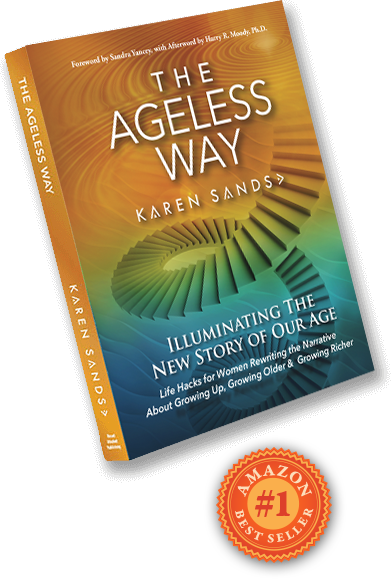 In Will Doig’s article “How to Solve the Boomer Retirement Crisis,” he defines this “crisis” as an unprecedented number of retirees moving away from cities, making “caring for aging boomers vastly more complicated.” The rest of the article then focuses on how cities can be made more attractive to retirees.
In Will Doig’s article “How to Solve the Boomer Retirement Crisis,” he defines this “crisis” as an unprecedented number of retirees moving away from cities, making “caring for aging boomers vastly more complicated.” The rest of the article then focuses on how cities can be made more attractive to retirees.
I agree with many of his excellent points about why cities aren’t exactly user friendly for people in or approaching their Fourth Age (80 years and beyond), and the solutions he offers make a lot of sense. But attracting more people to spend their later years in cities isn’t the answer to this crisis. In fact, I don’t really agree that this is a crisis at all. His perspective is that of “us” taking care of “them,” an outmoded view of older people as a burden, a perspective the boomer generation is likely to turn on its head.
For many people, ease of care simply isn’t as important to them as other factors in where they choose to live. Being in nature, low crime, low cost of living, being near family, smaller community, more space, lots to do to stimulate mind and body that’s easy to get to, clean air and plenty of clean water—these are just a few of the reasons people have for moving out of (or never moving into) urban areas. Many do so knowing full well that the nearest hospital is an hour or two away and that getting around will be more difficult if they reach a point where they can’t drive, but these are simply not as important as the other reasons for living in the suburbs or a rural area. And that’s their choice to make.
Others get the “best” of both worlds by moving out of the cities to retirement communities with onsite care, transportation options, and so forth, but this can be a painful compromise for those who would rather not be isolated from other generations, living only among those with whom they may not have anything in common beyond their age.
I do think it’s high time that we figure out how and where we want to live and what we want that to look like, then come together, all generations, to reinvent our communities—rural, suburban, urban, and everything in between. I’ve been exploring this for years with futurist colleagues and in my journalistic research, and more recently this is becoming a discovery conversation among my cohorts. The topic is buzzing even more today among boomers and matures (late Third Age, 65–80). Many of the ideas we toss around are similar to what Doig suggests for urban communities. What he doesn’t seem to realize is that these are just as workable outside cities.
- Intergenerational cooperatives (apartments, condos, grouped housing) in which the residents trade services—younger neighbors helping with driving, running errands, checking in on people, and so forth, and the older neighbors helping with childcare, cooking meals, business consulting, and other areas of professional expertise (particularly from the many boomers who will still be working).
- Self-sustaining “communes” of like-minded folks of all ages, people in our “tribe,” that is farm-to-table accessible (even in suburban and urban communes).
- Regular visiting health care specialists who see everyone in a building or small community in a single visit.
- Community-owned vans or buses for regular trips to far-off grocery stores, clinics, and so forth.
- “Granny flats,” where a resident stays in her or his home and rents out the rest to a young family.
- Homes built or retrofitted with elegant unobtrusive grab bars, nonslip level flooring, high sink basins, lighting, and so on.
- More rest areas, such as benches, and rest rooms in communities.
These are just a fraction of the possibilities, of course. One key thread in any community, though, is to make it intergenerational. Not only does this help buffer the intense loss and loneliness we tend to encounter in later life, it enables mentorship in both directions—the legacies of older generations and the new perspectives of younger, a stronger community because no members are swept under the rug, and a decrease in the problem of care that Doig was writing about in the first place—a stimulating active community prevents many health problems related to growing older and ensures that someone is always watching out to catch a problem early.
As some of us face this decision first for our own parents, we have the opportunity to start there in rethinking our communities and our families. For some of us, the extended family under one roof might continue to make a comeback. This is certainly happening with the children of boomers and their families staying with their parents because of the economy. And in the past, elders living with their children and grandchildren was common. Finding new ways to work the multigenerational household might be a part of the communities of the future.
And of course, even though the size of the boomer generation does mean more people retiring at one time, this generation is also less likely to retire at the usual time—or at all. I’ve written quite a bit about boomers working past retirement, full time, part time, as entrepreneurs, professionals, consultants, volunteers, and so forth. This is not only a necessity for many in this economy, it is also a desire. Post-50 women and men are the most active, long-living generation yet. Many of us don’t particularly want to retire at all. We’d rather reinvent work to adapt to our changing lives, changing bodies, and renewed focus on what really matters to us. In other words, for many years past the usual retirement age, we will be taking care of ourselves just fine, thank you very much.
The communities of the future do need to be redesigned, but not by younger generations solving their “problem” of what to do with the older population. All generations, especially boomers, need to be active in creating new ways of living and working together that reflect the changing workplace, the changing economy, and the changing face of aging in America.
What does your ideal community look like?







Leave a Reply
You must be logged in to post a comment.